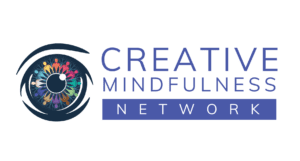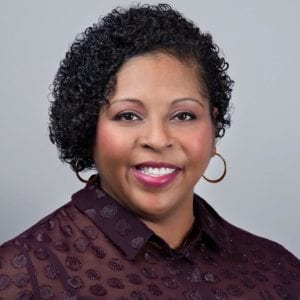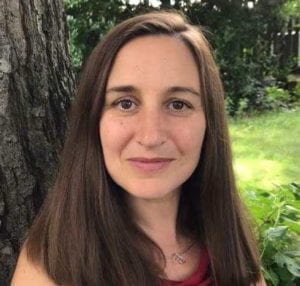There is a famous line in the “How it Works” passage from the Big Book of Alcoholics Anonymous (2001, 4th ed.): “There are those too who suffer from grave emotional and mental disorders, but many of them do recover if they have the capacity to be honest” (p. 58).
In year two of our addiction recovery, shortly after moving back to my hometown of Youngstown, Ohio, I attended several AA meetings a week to find my footing in the city where I experienced so much of my childhood trauma. At one of these meetings, there was a Vietnam veteran, who proudly spoke about their experiences with PTSD. Whenever the “How It Works” reader would share this line about grave emotional and mental disorders, the Veteran would call out, admittedly out of order, “Yup, that’s me.”
I recently thought about this person and those memories when I attended a general 12-step meeting at the Healing Together Conference on DID, held every February in Orlando, Florida. Although not super active in AA at this time in my life, I still attend meetings at conferences, especially this one. In such a space, I/we can be fully ourselves. We can talk openly about having a life-saving experience working a spiritual program of recovery and having dissociative identities resulting from trauma. We are proud to be a survivor who is continuously working towards a state of more fully thriving. And when the reader shared “How It Works” at Healing Together, the importance of the capacity to be honest struck a new chord more than 21 years into my recovery. When we reflect back on how we’ve done it, even as someone with dissociative identities who feels profoundly misunderstood by my family, my field, and society around me, it really does come down to honesty. Being honest with myself/ourselves, and being as honest as we safely can with those around us.
After getting sober in 2002, we were formally diagnosed with and treated for a dissociative disorder in 2004, and then officially became licensed in our state as a professional counselor in 2005. In writing our first book, EMDR Made Simple, in 2011, we tested the waters of coming out fully as a person with a dissociative disorder by disclosing that dissociation was a large part of our struggle with CPTSD. Yet we knew how hostile the fields of the helping professions, even the trauma specialists, could be towards those with dissociative identities. We held in much and even tried to listen to and learn from the established experts in dissociation during these years. Then, after our life exploded in so many ways starting in 2016, we re-entered intensive trauma treatment. Between that experience and having an ex-husband who tried unsuccessfully to use our dissociative disorder against me when we separated, I no longer gave any fucks. I/we had to come out—fully and transparently—as a person with a dissociative disorder/dissociative identities. We felt like this level of honesty is what the field needed, and we’re truly honored (see where those two words come from the name root?) that many others have credited our example in their own coming out. There is a Pride movement that’s been happening amongst all plurals and plural professionals, and it’s truly marvelous to experience.
We’ve been speaking with a few friends and colleagues recently about the divide that seems to be even deeper now between those of us who are public with their lived experience and many of the established professionals in the fields of trauma and dissociation. The incident that happened last year when McLean Hospital’s Dr. Matthew Robinson used clips of dissociative systems on TikTok without their permission to call them out as faking the disorder in a presentation certainly widened the fissure. And it’s not lost on me that many see the power of my voice which has more loudly dismissed and called out established clinical leaders in the field of trauma and dissociation as divisive rather than helpful.
A few of the people I trust and consider friends are still in a position of wanting to more directly build bridges and advocate conversation between those of us, clinical and non-clinical, who are out with our lived experience and the established leaders and researchers in the field. From the bottom of my heart I wish my friends well and want to support them in their endeavors. At our core we are fundamentally a build bridges, not walls person/system. We’ve taken heat over the last year for platforming causes on our social media like Standing Together and Solutions Not Sides during the most recent war in the lands of Israel and Palestine. Bridges can be marvelous.
I do, however, feel the need to share what I’ve learned about bridging—it is a two-way street. Since first being vocal in the EMDR community in 2007, I’ve learned that some people will listen to you and other people will shun you as difficult or dysregulated. Too “crazy” and mouthy to be taken seriously, which is a special label you can get when you are out and not trying to bottle things up and mask anymore. We’ve tried, in many institutions, to change things from within, to play the long game, and to be a diplomat. In some ways we can recognize where we’ve been successful. And believe it or not, we are still willing to be a bridge. Yet we will no longer hamper our honesty, our truth just to make others more comfortable. Others have typically never thought twice about shoving their “evidence,” their scriptures, their peer-reviewed studies that often lack connection to real world settings down our throats. So why should we hold back from the honesty of our experience?
The capacity to be honest saved our lives thus far. And a major part of our recovery process has been exploring the many ways that we’ve been lied to—by the church, by our family, by a patriarchal society, and by our field. We were lied to in graduate school when we were told that DID was so rare, we would never see it. And then we were lied to by clinical leaders who encouraged such extreme caution about working with dissociation, that they promoted a climate of fear around it. We were lied to by teachers who said that it was not advisable to talk directly with our parts and to see them as real people within us (and grateful for our two major therapists along the way who didn’t follow these guidelines and showed us a healing truth, embracing all of us as we are). We were lied to by people who told us that the only way to promote real change was to be a good girl and wait our turn. We will gladly sit at your table and work to build bridges wherever and whenever we are invited. Yet this will involve us speaking from a place that honors our lived experience and calling out lies whenever we hear them.















One Response
Beautiful words. We can no longer be silent about what we’ve been through. We are empowered to make a difference for ourselves and our compassionate community of multiples. It shouldn’t have to be such a fight when we have proven over and over again what the power of healing truly looks like. Authenticity, honesty, and integrity are very dear to our heart. We are not going to wait for an invitation to anyone’s table. We are setting our own table.